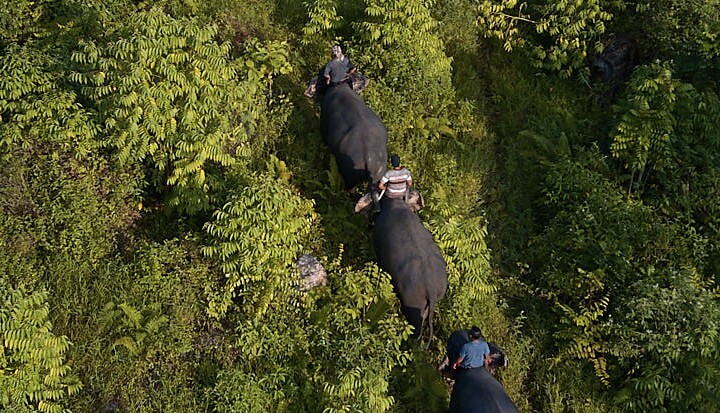Collaborating with farmers, companies and governments in a specific geographical region is not only a powerful way to accelerate sustainable land management and improve farmers' livelihoods, but also a very effective way to share risks, reduce costs and create lasting change.
IDH aims to protect and restore five million hectares of vulnerable landscapes by 2030 by promoting pre-competitive collaboration to address collective challenges such as deforestation, decarbonizing value chains and increasing farmer resilience.
Reaping the benefits of landscape initiatives requires long-term commitment and continuous learning. Here are 10 of our lessons from the last 10 years of IDH supporting such approaches in Asia, Africa and Latin America:
1. The core currency is trust.
It takes time to build trust and alignment with stakeholders, which is achieved through engagement, listening and small concrete actions. Once you have trust, the sky is the limit and you can move from collaborating on one priority like regenerative agriculture to another like complying with the EU Deforestation Regulation.
2. Solving a common problem creates a win-win-win situation.
In the South West Mau Forest in Kenya, several stakeholders were affected by forest degradation. Tea production declined, communities suffered as they needed the forest for pasture, and there was less water for hydroelectric power and drinking water. A landscape approach benefited everyone because it reduced deforestation, had a positive impact on water cycles and improved the income of small-scale producers by two to three times.
3. The greatest business value is risk reduction.
Pre-competitive work on aligned priorities is not only cheaper and has a greater impact than doing it on a company-by-company basis. The outstanding business value often also lies in the reduction of risk, with social or environmental spillover risks being drastically reduced.
4. Collaboration reduces compliance costs.
In collaboration with the Vietnamese government, IDH helped create the world's first national action plan for deforestation-free procurement areas in line with EUDR. An independent analysis of Vietnam's central highlands shows that the cost of collectively achieving regenerative results at the landscape level was up to fifteen times lower than if companies did so alone.
5. Private sector participation is critical to achieving scale.
In Mato Grosso, Brazil, the Sustainable Calf Production Program led to the development of a protocol that provides technical solutions for traceability in indirect beef supply. In September 2022, three of the country's leading meatpackers set ambitious traceability goals that are critical to achieving scale. To date there are over 200,000 animals in a traceability system, which is a crucial step towards reducing deforestation.
6. Positive results allow expansion to a larger area.
A landscape initiative has been launched in Aceh, Indonesia, to improve forest monitoring, restore degraded forest and boost smallholder farmers' incomes. Deforestation monitoring tools have been used to calculate the outcomes of forest conservation practices. The positive results at the district level were evidence that the initiative should be expanded to the provincial level to protect a much larger area of biodiverse forests.
7. Patience is required to see the benefits.
Multi-stakeholder coalitions take one or two years to form. Thereafter, the positive impact increases as coordination is key to tackling problems that require coordinated action, such as action to combat deforestation. Years three to five generally show a good return on the initial investment, with some of the biggest positive effects becoming apparent after year five.
8. Landscapes are not an investable asset class.
Landscape initiatives aim to improve sustainability, resilience and inclusivity in a region, but they do not act as financial assets in their own right. Financial institutions may be reluctant to provide capital that is geographically limited. Although landscapes alone are not investable, they can improve the profitability and impact of investments in real assets such as farms, agribusinesses and forestry projects.
9. Landscape models can influence supply chains.
Landscape initiatives can be used to test and build resilient models to meet tomorrow's challenges. These models for brands, governments and farmers can then be adopted by supply chains and help transform practice within a company or industry.
10. Exiting a starring role requires careful planning.
Transitioning from a landscape initiative requires careful planning to ensure continued good governance. The stakeholders involved in the initiative must have full ownership of the initiative in order to take on the convening role. Creating an independent legal or institutional structure can give an initiative a solid foundation for future continuation.
To learn more about existing landscape initiatives from IDH and many other organizations, visit SourceUp, where you can search 65 existing initiatives by commodity or country.
This article is part of the Business Fights Poverty climate series with Fundação Dom Cabral (FDC), taking place during the COP30 climate summit in Belém, Brazil.
